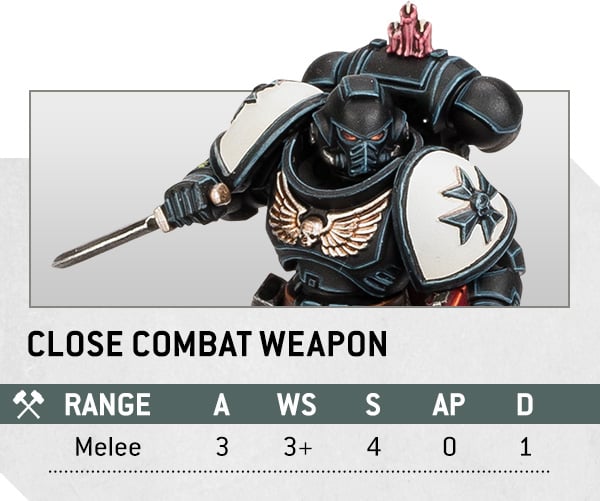There are sweeping rules changes afoot in the new edition of Warhammer 40,000, and one focus for change is on that cornerstone of every unit in the game – the datasheet. A lot has changed this time around, and in light of the fact that codexes are getting a complete reset in the new edition,* it's time to look at how your units will appear.
Take a peek at the new-look Space Marine Intercessor.

You probably have questions. Where are Weapon Skill and Ballistic Skill? Do units still have Strength or make Attacks? And what in the world does OC mean?
What is OC?
Objective Control – or OC – is a measure of how well a unit can secure critical locations. It’s an elegant means of clarifying a previously complex aspect of the game. Now each model has an OC characteristic, and to determine who controls an objective, you simply count up the total OC of all models within range. This small but impactful change breathes new life into basic troops – taking and holding ground is a newfound specialty and a clear key to victory.
Warriors that were previously categorised as Troops will generally have a higher OC than elite units – whose job is not to hold ground, but to strike and move on. Vehicles and Monsters also earn a more substantial OC, so Knights and the like can muscle smaller units off objectives.

How does Leadership work?
Leadership is much more impactful in the new edition. Your units’ morale is now gauged with a Battle-shock test. Many factors can force a unit to test for Battle-shock, including being below Half-strength during the Command Phase. Fail and they struggle to capture objectives, use Stratagems, or Fall Back from combat.
You’ll also notice that Leadership now counts upwards. Our Intercessor has LD 6+ – which is equivalent to his old value of 8.
What’s happened to WS, BS, S, and A?
Offensive characteristics are still very much in the game – but they now live on weapon profiles, to help keep datasheets clear and easy to read. So in that case, how do weapons now work?
Weapon profiles explained
Everything you need to take a shot or a swing at your enemies is now contained in an individual weapon profile – everything from Attacks to Weapon Skill to Damage is all in one place. This means that weapons like power fists, which used to need text to explain that they made things harder to hit, now have their own hit roll statistic.
Moreover, weapon profiles are tied to individual units – so a chainsword in the hands of a Space Marine is deadlier and easier to hit with than one held by a snivelling cultist.


The fundamental interactions haven’t changed – equal Strength and Toughness still means you wound on a roll of 4+, and so forth. It’s just that all of a weapon’s quirks are contained in its Core Abilities.
Many different effects are covered by Core Abilities, from classic weapon types like Assault and Rapid Fire to auto-hits from flame weapons. We’ll go into weapon rules more in an upcoming article.
Curious what the datasheets for vehicles look like in the new edition? Stay tuned to Warhammer Community for more in the coming weeks, and head back to our hub page to find all of the information revealed so far.
* With a flush of free indexes to get you by in the meantime.

















